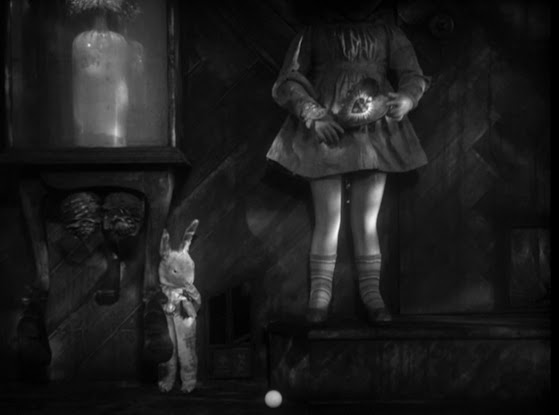#His Name is Alive #experimental rock #dream pop #avant garde #alternative rock #indie rock #neo-psychedelia #art rock #Quay Brothers #animated music video #stop-motion
This was the first music video that the Quay Brothers were entirely responsible for, having previously contributed animated sequences to Peter Gabriel's 'Sledgehammer' (d. Stephen R. Johnson) in 1986. They had previously been approached by Warren Defever, the Michigan-based founder of the musical project His Name Is Alive (alongside vocalist Karen Oliver and drummer Damian Lang), who wanted to licence extracts from Street of Crocodiles (1986) for use in one of their music videos. The Quays refused permission, but were sufficiently intrigued by Defever's work to agree to shoot a music video for him from scratch.
'Are We Still Married?' was originally released in 1991 as a track on His Name Is Alive's second album Home Is In Your Head. This is very typical of the band's work, and indeed many other releases on the 4AD label, creating a dreamlike ambience through selective distortion of instrumentation and vocals, to the point where it's often hard to make out specific lyrics. Naturally, this approach suited the Quays down to the ground, and they duly ignored the song's textual content in favour of a typically oblique evocation of childhood.
The most immediately striking image is of a young girl, whose head is barely visible, but whose ankles expand and contract in a rhythmic motion. This looks as though it was computer-enhanced, but the effect was in fact entirely mechanical - the Quays' regular technical collaborator Ian Nicholas built a hinge mechanism in the girl's ankles. Around her, a somewhat moth-eaten white rabbit plays a manic solo game of ping-pong.
The video was initially inspired by an image by an anonymous photographer of a girl standing in front of a door holding a paddle. There was also a white doorknob in the picture, which the Quays initially mistook for a ping-ping ball. Although the Quays claimed not to have read Lewis Carroll's Alice in Wonderland, there are unmistakable echoes, from the general theme of little girls growing and shrinking before one's eyes, mysterious bottles of unidentified substances and doorknobs that turn into ping-pong balls. From: http://www.screenonline.org.uk/film/id/1222875/index.html
His Name is Alive are a rather eccentric experimental rock project from Livonia, Michigan, currently based in Detroit. Founded in 1990 by guitarist, composer, and sole constant member Warren Defever, the band is fond of Genre Roulette, having recorded songs ranging from Dream Pop, alternative rock, funk, prog rock, and Baroque Pop to experimental noise and gothic ambient compositions. The band was originally signed to 4AD Records, under whom they released a string of critically acclaimed records throughout The '90s, but were dropped by the label in the early 2000's after failing to meet sales expectations. After this, the band went defunct until 2006, when Defever revived the project with a new lineup. Since then, the band has steadily released new records and shows no signs of slowing down. From: https://tvtropes.org/pmwiki/pmwiki.php/Music/HisNameIsAlive











